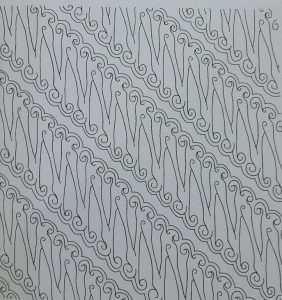Batik Is Made
One of the more intricate fabric printing techniques is batik, which creates patterns through a resist technique that involves covering certain areas of the cloth with melted wax. This prevents the cloth from absorbing dye, creating light patterns on dark backgrounds. The art of batik has been around for more than 2,000 years, and it is thought to have developed independently in various regions of Africa, Central Asia, the Middle East, Indonesia, and Java over time. It is also possible that batik spread from these areas to other parts of the world along caravan trade routes.
The first step in making a batik is to draw the pattern on paper before starting. The artisan then uses a copper stylus and a mixture of beeswax and paraffin wax to outline the design on both sides of the cloth. This process can take a long time, and the batik artisan must wait for each color to sink into the cloth before moving on. This allows the artisan to make mistakes without ruining the whole piece. In many larger batik factories, men are responsible for drawing the patterns on the cloth, but in Ms. Mohammed’s workshop, the women work on their own designs.
Website design By BotEap.com
Next, the artisan soaks the cloth in a dye bath, starting with the lightest shade and working their way up to darker shades. If there are any blotches of unmelted wax, they are removed with boiling water and the process is repeated until the desired color is achieved. During this process, the artisan will use a wajan, which is a ceramic vessel that looks like a small wok. The artisan places the wajan over an iron stove or spirit burner and uses it to keep the wax in a melted state while they apply it to the cloth.
How Batik Is Made
As the fabric is soaked in different colors, the artisan must keep the pattern straight and even. This requires a lot of practice, as it is easy to lose control of the line and cause it to run or be uneven. In addition to using a wajan, the artisan will use a cantik, or takun, which is a metal tool that looks similar to an ice cream scoop and is used to apply the wax in straight lines.
Website design By BotEap.comSend Gifts to Sri LankaBatik, an ancient textile art form, involves a meticulous wax-resist dyeing process. To create batik, artisans start with a cloth, often cotton or silk, stretched on a frame. They use a tool called a “tjanting” or a brush to apply hot wax in intricate patterns, covering areas meant to resist dye penetration. The waxed fabric is then submerged in dye, with the waxed parts preserving the original color. This process is repeated, layering wax and dye until the desired design emerges.
Ms. Mohammed’s studio and boutique, Jez Look Batiks in Matara, Sri Lanka, has been open for nearly seven decades, and her workshop brims with framed letters from Buckingham Palace and photos of Queen Elizabeth II wearing her white satin scarf featuring baby pink floral motifs. Everyday, her shop and workshop teem with curious outsiders who want to learn the craft.